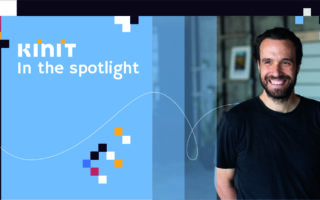What's
Fake news, fake reviews and fake users: How to discern the fakery using intelligent methods
Misinformation (fake news) and antisocial behavior (such as hate speech or trolling) are toxic to the digital environment. Especially nowadays, we need an online space, where it is possible to get reliable and truthful information, as well as to meet virtually in a safe way. Therefore, we joined forces with colleagues from Slovak University of Technology, Comenius University and Technical University in Košice. In a joint publication we summarized some of our previous research activities, which aim to characterize and reveal such unwanted content and unethical users.
In our research, we use intelligent and knowledge-oriented methods, especially machine learning, deep learning, natural language processing, and complement them with methods commonly used in the digital social sciences and humanities. Among other things, we also analyzed the Czech-Slovak media and partisan scene, especially the connection between various media, through links.
Also, for the identification of users that are more susceptible to fake news, the social context and the selected attributes of shared content have been studied.
Choosing from our results, we found out that:
- Partisan media can be recognized from mainstream media also according to their linking patterns.
- For fake user detection, the social context of the user can be applied, but the results are highly domain dependent. When we also used the text attributes of the post, the detection improved significantly.
- Of the various methods tested, the model which used SVM (Support Vector Machine), proved to be the best for detecting false reviews.

In our work, we do not want to be the arbiter of truth – gossip and different opinions are part of freedom of speech and democracy and as such should not be restricted. At present, however, we are witnessing an information war – demonstrably coordinated actions of people and bots, the sole purpose of which is to undermine trust in society. We are aware that such a fight cannot be won only by IT methods, although they significantly streamline manual detection. There is also a need for cooperation with other professionals, such as journalists, teachers and other capacities in the public and non-profit spheres.
Full citation: Machova K. et al. (2021) Addressing False Information and Abusive Language in Digital Space Using Intelligent Approaches. In: Paralič J., Sinčák P., Hartono P., Mařík V. (eds) Towards Digital Intelligence Society. DISA 2020. Advances in Intelligent Systems and Computing, vol 1281. Springer, Cham. https://doi.org/10.1007/978-3-030-63872-6_1


